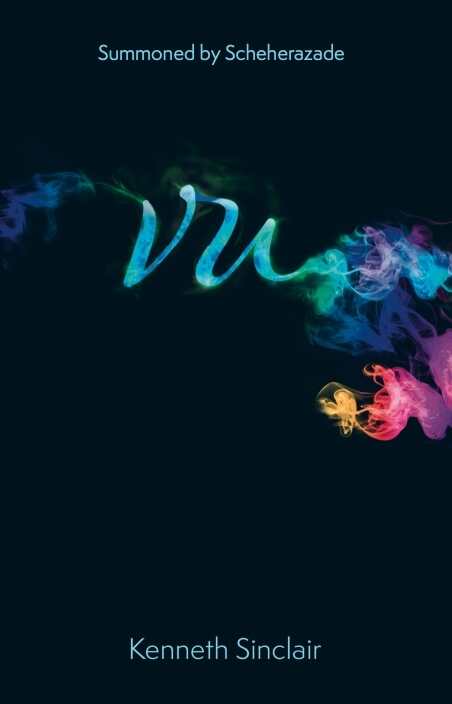Vu
Epic in scope, the literary novel Vu is made up of woven-together historical tales used to deliver a thorough picture of the past.
Using the framework of Arabian Nights, Kenneth Sinclair’s literary novel Vu is a history of the world told in a dreamy stream of elegant prose.
In an inversion of the original story, this narrator, Gabriel, seeks to entertain the princess Scheherazade by recounting a history of literature and the arts through the ages. The tale begins in antiquity and ends in the latter half of the twentieth century, and its parts are arranged as a flowing series of stream-of-consciousness vignettes. References to hundreds of other works are also included, with the book often quoting these, and each referenced moment, author, or line of verse is given space to breathe before Gabriel moves on to the next. Nonetheless, the tale that Gabriel tells is built out of the summaries of other, more complete stories, limiting the originality of his own contributions.
Poetic digressions and clever interjections from Scheherazade help to move the text forward. And in between the storytelling chapters are occasional developments in the frame story of Gabriel regarding his capture by the princess. Metafiction elements also wend in, as with a call from a friend that interrupts a train of thought and dogs that beg for walks.
Between storytelling sessions, Gabriel engages in abstract discussions of philosophy and religion with Scheherazade’s former storyteller. Gabriel, the princess, and the storyteller all speak in the same poetic tone, exchanging obscure references and fine lines of verse. For the inner story, though, the huge number of historic figures of various fields and historicity makes attaching to any individual difficult. A few figures, including Dante Alighieri, receive more page time, but even their characterizations are limited.
Epic in scope, the book utilizes vivid descriptions and languid, luxurious language, including terms and phrases in Latin, French, and Greek, to support its timeless, high-concept atmosphere. However, the repetition of certain elements (chapters often begin with the “ochre cell walls” or a description of Scheherazade’s appearance) lessens the impact of the heightened tone over time.
As the book meanders through time, it is also prone to returning to the same locations in different periods, including Paris, England, and “Spain, the Land of Vespers.” The book’s tension increases, however, when it reaches World War II and its focus moves away from the arts toward the tragedies and terrors unfolding in Nazi Germany.
In the thoughtful literary novel Vu, a captured narrator shares a patchwork history of art, philosophy, and storytelling.
Reviewed by
Brendan McKelvy
Disclosure: This article is not an endorsement, but a review. The publisher of this book provided free copies of the book and paid a small fee to have their book reviewed by a professional reviewer. Foreword Reviews and Clarion Reviews make no guarantee that the publisher will receive a positive review. Foreword Magazine, Inc. is disclosing this in accordance with the Federal Trade Commission’s 16 CFR, Part 255.

